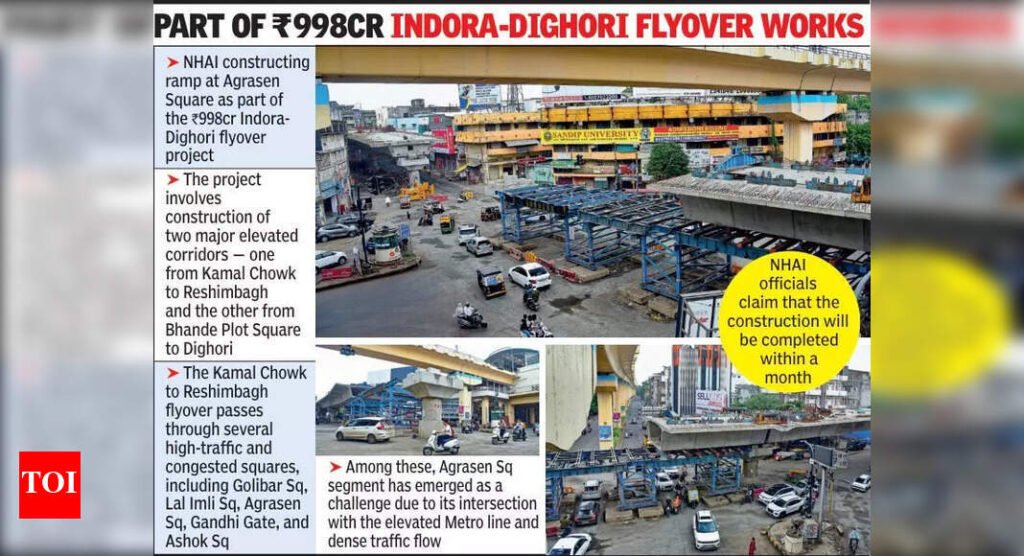Nagpur: The National Highways Authority of India (NHAI), currently executing the Rs998 crore Indora to Dighori flyover project, has undertaken a technically challenging ramp construction at Agrasen Square — one of Nagpur’s busiest and most congested junctions.While the work has aggravated daily traffic congestion in the area, authorities have assured that the construction will be completed within a month.The flyover project, a key infrastructure upgrade, involves construction of two major elevated corridors — one from Kamal Chowk to Reshimbagh and the other from Bhande Plot Square to Dighori. These corridors are expected to significantly reduce travel time for thousands of commuters traversing North to South Nagpur.The Kamal Chowk to Reshimbagh flyover, in particular, passes through several high-traffic and congested squares, including Golibar Square, Lal Imli Square, Agrasen Square, Gandhi Gate, and Ashok Square. Among these, the Agrasen Square segment has emerged as a challenge due to its intersection with the elevated Metro line and dense local activity.“At Agrasen Square, we had to modify our construction approach. Earlier, spans were erected using an auto-launcher. However, due to height constraints created by the overhead Metro viaduct, the auto-launcher couldn’t proceed beyond this point,” a senior NHAI official told TOI. “So we dismantled the launcher and switched to a ground-based support system for erecting the next segments,” the official added.Adding to the complexity was the presence of a prominent landmark statue of Maharaja Agrasen, a legendary king considered founder of the Agrawal community. “We coordinated with the locals and moved the statue temporarily to Agrasen Bhavan after performing religious rituals. Collector Vipin Itankar was present during the relocation,” the official said. “After the ramp work is complete, the statue will be reinstalled, and the square will be beautified.“Interestingly, this is the first flyover being built perpendicularly beneath the Metro line in the city. NHAI engineers are maintaining a 5.5-metre clearance between the ground and the flyover deck, and another 5.5-metre gap between the flyover and the Metro viaduct, meeting IRC (Indian Roads Congress) safety and design standards.However, due to the deployment of ground support equipment and a temporary pillar, a significant portion of the square has been occupied, leaving little room for vehicle movement. This has resulted in daily traffic snarls, frustrating commuters during peak hours.Despite the inconvenience, NHAI has assured that all efforts are being made to expedite the work and restore normal traffic conditions by mid-August 2025.


